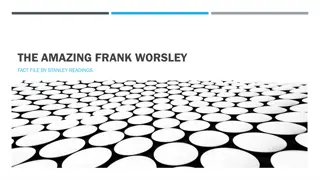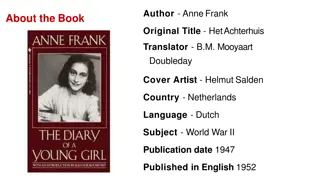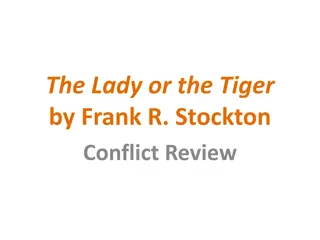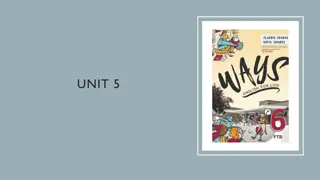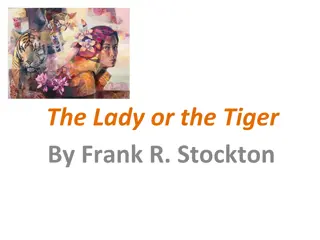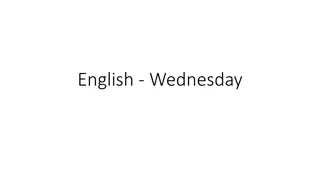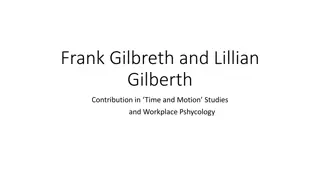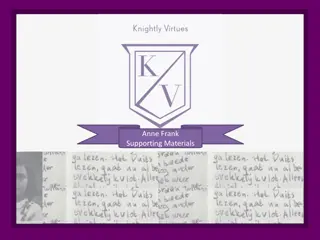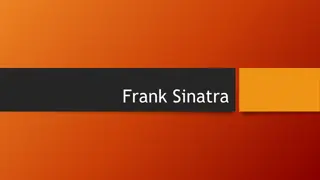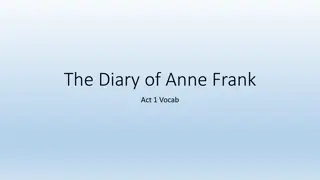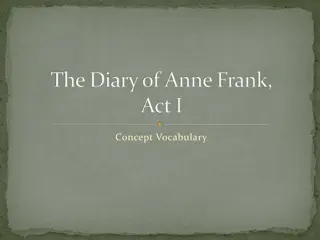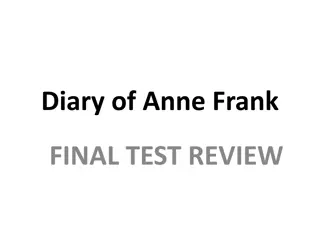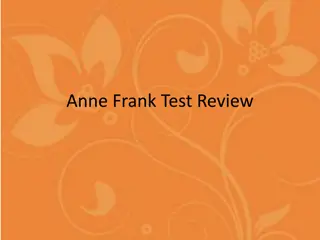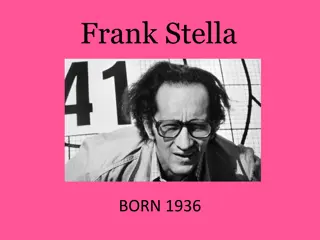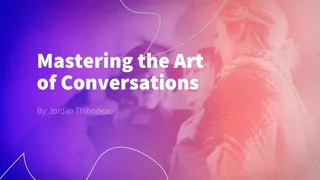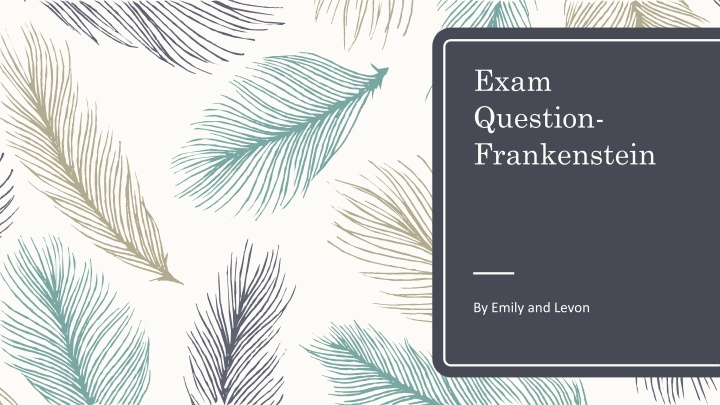
Frankenstein Detailed Character Construction Analysis
Explore the intricate characterizations in Frankenstein, focusing on the physical descriptions, actions, thoughts, reactions, and speech of the monster. Analyze how these detailed constructions evoke complex emotional responses in readers. Dive deep into the monster's positive and negative attributes as portrayed in the novel.
Download Presentation

Please find below an Image/Link to download the presentation.
The content on the website is provided AS IS for your information and personal use only. It may not be sold, licensed, or shared on other websites without obtaining consent from the author. If you encounter any issues during the download, it is possible that the publisher has removed the file from their server.
You are allowed to download the files provided on this website for personal or commercial use, subject to the condition that they are used lawfully. All files are the property of their respective owners.
The content on the website is provided AS IS for your information and personal use only. It may not be sold, licensed, or shared on other websites without obtaining consent from the author.
E N D
Presentation Transcript
Exam Question- Frankenstein By Emily and Levon
Detailed character construction can arose complex emotional responses in a reader. Tip; if a word within a question can be removed, and the sentence still makes sense, it has been put in the question intentionally and must be addressed.
Detailed Character Construction Complex Emotional Response
Characterizations (PAIRS) Physical description - the character's physical appearance is described. For example, characters might be described as tall, thin, fat, pretty, etc. We might be told the color of hair, or something about the clothing of the character. How the character dresses might reveal something about the character. Does the character wear old, dirty clothing, or stylish, expensive clothing? Action/attitude/behavior - What the character does tells us a lot about him/her, as well as how the character behaves and his or her attitude. Is the character a good person or a bad person? Is the character helpful to others or selfish? Inner thoughts - What the character thinks reveals things about the character. We discover things about their personalities and feelings, which sometimes helps us understand the character's actions. Reactions - Effect on others or what the other characters say and feel about this character. We learn about the relationships among the characters. How does the character make the other characters feel? Do they feel scared, happy, or confused? This helps the reader have a better understanding of all the characters. Speech - What the character says provides a great deal of insight for the reader. The character might speak in a shy, quiet manner or in a nervous manner. The character might speak intelligently or in a rude manner.
The Monster's Character Monstrous Sensitive and Humane Speech Actions Actions Thoughts of Others Physical
The Monster's Negative Attributes Actions Murders of William, Clerval and Elizabeth Burning of the De Lacey house Others' Thoughts "filthy daemon" "we will never recover from the horror [of seeing the monster]" Physical Description (similar to other's thoughts as it is described in first person) "Breathless horror and disgust filled my heart" 'Deformity'
The Monster's Positive Attributes Speech F insists on a difference in the voice of F and that of the M, but that difference is inaccessible to the reader. We are more likely to be struck by the similarities in the way both F and the M express themselves- both speak with an eloquence and use the same kind of heightened language. Novel fails to provide differences in tone, diction and sentence structure that alone can serve in a written text to represent human voices. The monster s eloquent narration of events (as provided by Victor) reveals his remarkable sensitivity and benevolence We are capable of feeling sympathy for the Monster Actions Aiding and falling for the De Lacey Family Saving the girl from drowning
The contradictory nature of Mary Shelley s characterization of the Monster produces a disoriented and unstable emotional reaction. Keeping in mind the important parts of the question; detail comes from the contradictions, while complexity comes in the uncertainty of the readers deliberation of the character.
Structure Intro The contradictory nature of Mary Shelley s characterization of the Monster produces a disoriented and unstable emotional reaction. BP1) Actions The morality of the Monster s actions produce both a negative and a positive interpretation of the character. BP2) Thought and Speech; inclusive of both others and the Monster s Through other characters perspectives of the Monster the reader may from a hearted towards him, but this own beliefs and perspectives produce remorse for this character. Conclusion




